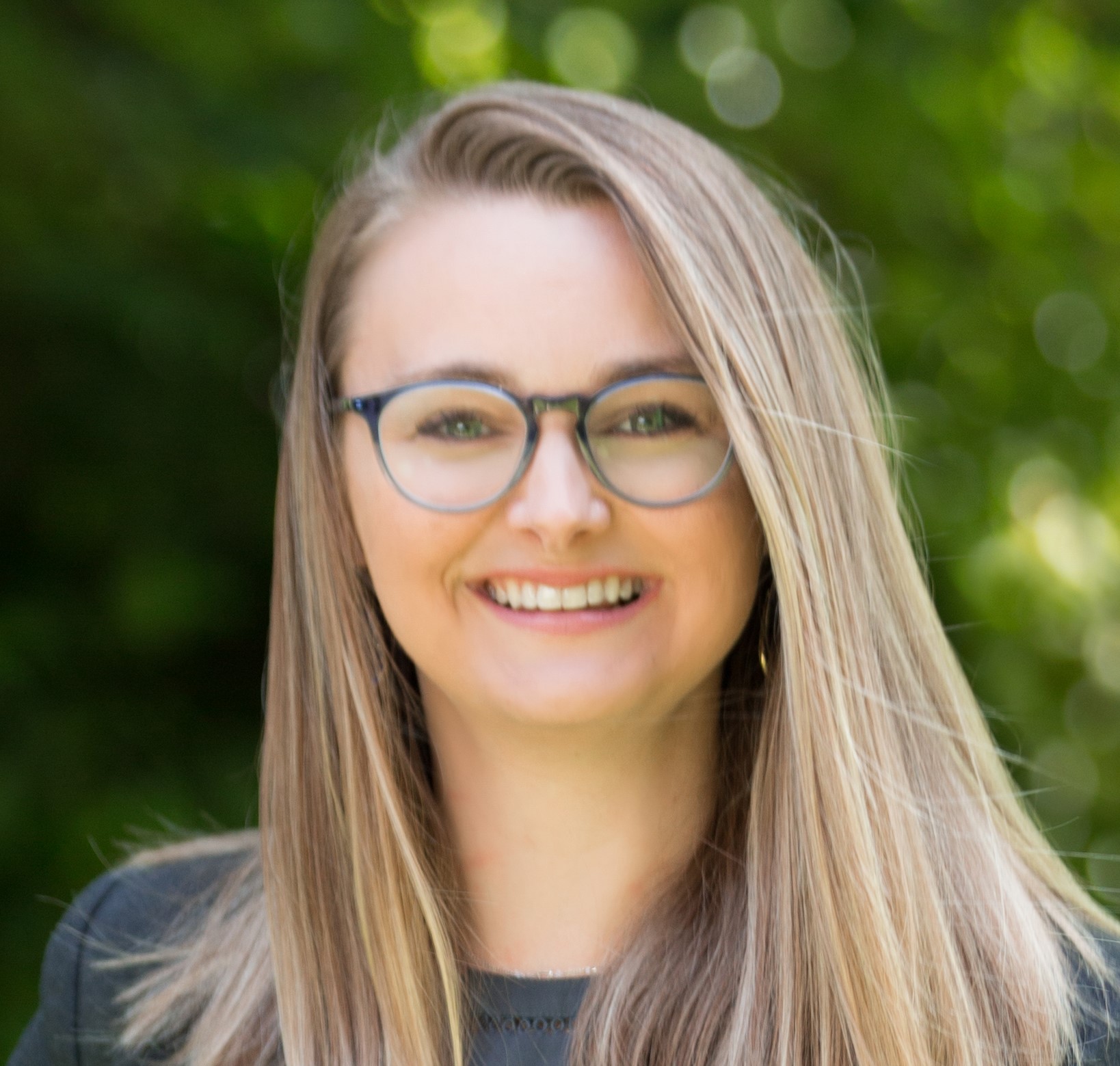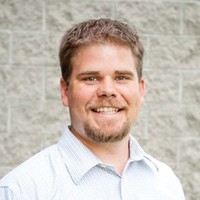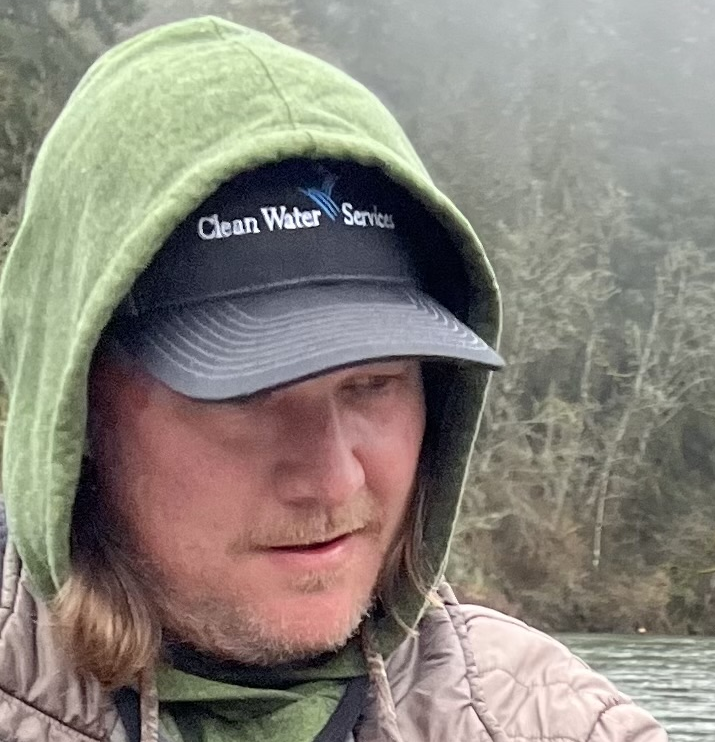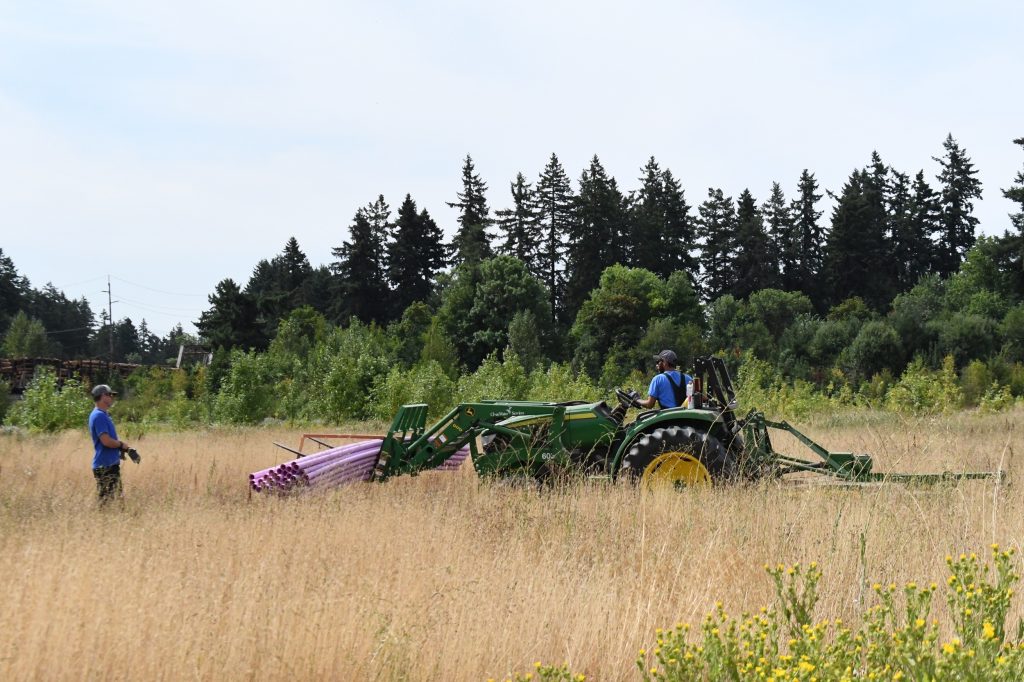Studying PFAS in Recycled Water Applied as Wetland Irrigation
Water Reuse In Depth
Issue #1 | January 2024
Following two summers of sampling by Clean Water Services, initial findings suggest that recycled water irrigation is not substantially contributing to PFAS Concentrations in the soil and groundwater at an Oregon Wetland.
Amanda Pebler, Water Systems Consulting
Scott Mansell, Clean Water Services
Jared Kinnear, Clean Water Services
For more than three decades, Clean Water Services (CWS) has been a leader for water reuse in Oregon. The utility recycles more than 85 million gallons a year of treated wastewater for local irrigation and spearheads reuse related research efforts, all while navigating an ever-changing regulatory environment. CWS has also utilized recycled water for restoring natural wetland areas and other land-use applications.
In 2006, CWS purchased Thomas Dairy, a property with decades of agricultural use along the banks of the Tualatin River and near Durham Water Resource Recovery Facility, for ecological uplift opportunities. Passive restoration activities occurred onsite for nearly 15 years, then in 2021, CWS began applying reuse water to the site to improve native wetland vegetation function and diversity. The property has since become a type of outdoor laboratory for a variety of research projects, including ones that are leading to a better understanding of per- and polyfluorinated alkyl substances (PFAS) in reuse water applications.
According to the US Environmental Protection Agency, PFAS “are widely used, long-lasting chemicals, components of which break down very slowly over time.” PFAS has been linked to harmful health effects in humans and animals and is prevalent among a wide variety of products globally. The chemicals are a growing concern in the water and wastewater industries as future regulations and potential impacts to the sewershed, drinking water, soils, and groundwater are unclear.
CWS is studying the sources of PFAS contributing to its water resource recovery facilities (WRRFs) and the potential impact of PFAS in their effluent and recycled water on the Tualatin River and the sites irrigated with recycled water throughout the area. There is little known about PFAS in land-applied water reuse, especially for restoring native wetland vegetation. The types and concentrations of PFAS in effluent differ greatly from those in biosolids. Therefore, studies on biosolid applications cannot be relied upon to understand the impacts of PFAS in reuse. Although there are no large PFAS-producing industries that are contributing to CWS’s influent, the study has shown that individual industries dominate the mass load of PFAS to two of the four WRRFs. Even when not affected by industrial discharges, the chemicals are still nearly always present at lower concentrations due to domestic and commercial sources. CWS is working with industries and developing outreach programs to the commercial and domestic sectors to help reduce PFAS concentrations.
Since 2022, CWS has studied the effects of reuse on PFAS concentrations at sites across Thomas Dairy. Through these studies, CWS is trying to understand what happens to PFAS concentrations in recycled water after being applied to restored native wetland vegetation for irrigation. Initial soil sampling in 2022 showed perfluorooctane sulfonate (PFOS) —the most common PFAS compound detected in soils worldwide—to be the only quantifiable compound measured at the site. A few others were detectable, but below quantitation limits.
Concentrations were found to increase with distance downstream and lessen with depths between 0 and 2 feet (shown in figure 1), suggesting that irrigation water may be playing a role. However, PFOS concentrations in the soil did not increase over the irrigation season relative to the concentrations present before irrigation, calling into question whether irrigation increased PFOS concentrations in the soil. Therefore, it is not clear if the PFOS source is primarily from irrigation water or if other factors are at play.
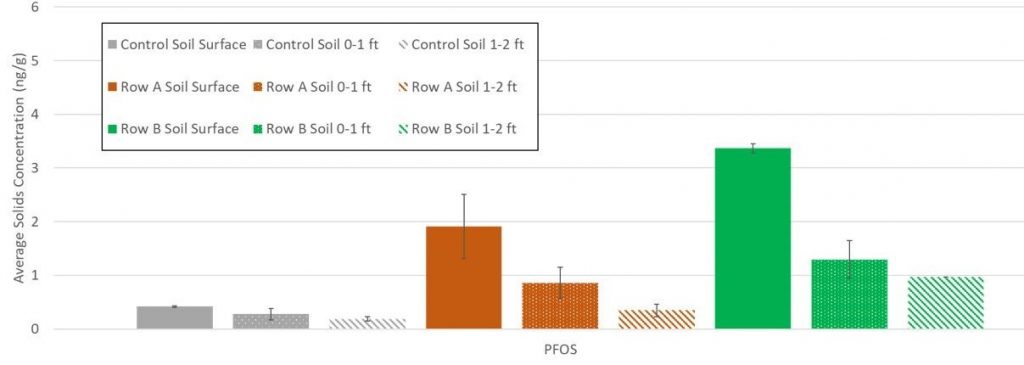
In the summer of 2023, the utility installed groundwater wells at Thomas Dairy to determine if reuse water applied as irrigation could be reaching groundwater. Soil and groundwater sample sites were also refined in 2023 to better capture different types of soil at the wetland and a control was added at Thomas Dairy known to be out of range of the irrigation and upstream of groundwater flow direction. As in 2022, PFOS was the only quantifiable form of PFAS measured in the soil, but concentrations did not increase over the irrigation season (see figure 2). Unlike in 2022, however, the concentrations were as high in the control site as they were in the irrigated sites. Several forms of PFAS were also detected in the groundwater from all sites, but again, the concentrations were as high or higher in the control well than in the wells at the irrigated sites. Continuous groundwater and soil moisture sensors installed at Thomas Dairy also suggest that the recycled water applied is not reaching groundwater. The PFAS compounds present and their concentrations were similar to those measured in nearby urban creeks in the dry season suggesting a more widespread source of PFAS to groundwater in the region. CWS plans to conduct more widespread sampling of groundwater wells in the region in 2024. CWS is also planning to sample vegetation for PFAS at Thomas Dairy to close the mass balance and determine the fate of PFAS in the recycled water applied at the site more completely. Additionally, CWS is set to begin irrigating another new wetland restoration site with reuse water sourced from a different treatment plant and will be sampling this wetland for comparison with Thomas Dairy. The utility has also recently constructed a PFAS lab to analyze samples in-house and has plans to construct soil mesocosms for further PFAS study in a controlled environment.
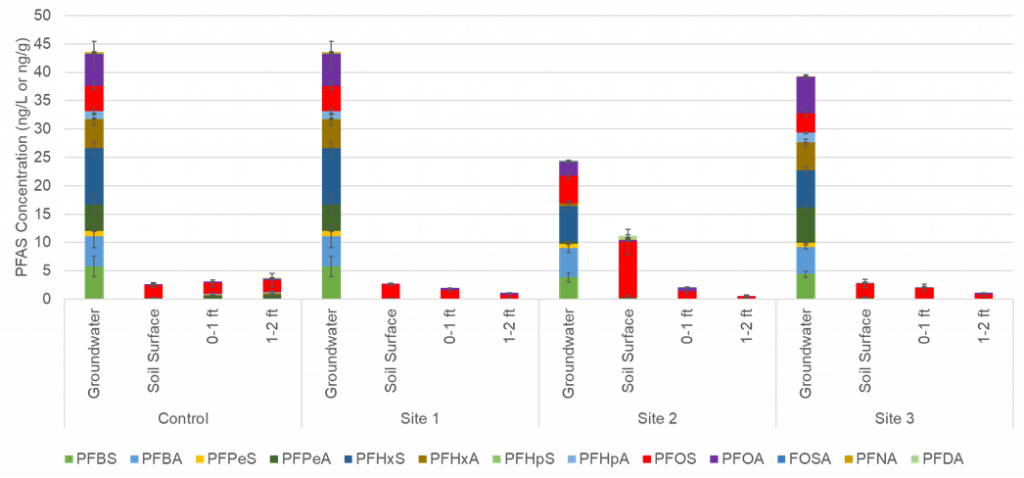
CWS is also building partnerships and providing outreach to PFAS contributing industries. Outreach strategies have included developing materials targeting industries as well as general sectors to educate about PFAS, identify what products or processes of theirs may be the sources, and provide alternatives. CWS is also very active in state agencies and partnerships with other utilities to help legislators and the public better understand PFAS in Oregon. In developing these partnerships and leading critical research, CWS is proactively preparing for coming PFAS standards for wastewater.

